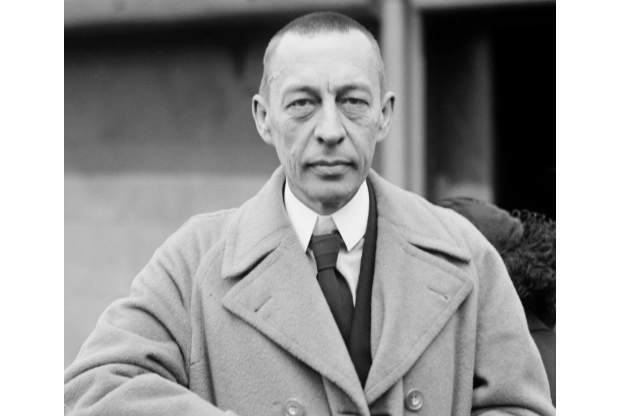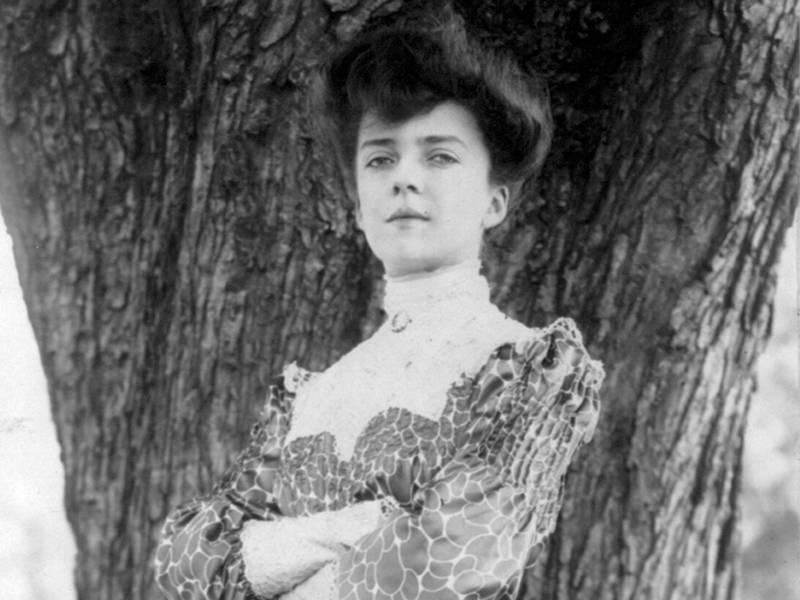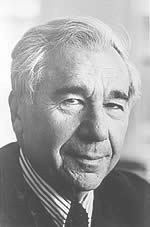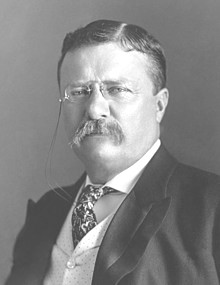FOR YOUR HEALTH: Talk To Your Healthcare Provider About A Better Way To Treat Migraine
/0 Comments/in For Your Health/by Website Editor
Fast-acting treatments may help make migraines less of a headache for many.
(NAPSI)—Contrary to popular belief, migraine is not just a bad headache. It’s a serious, often incapacitating, neurological disease. In addition to serious pain, migraine can also cause nausea or vomiting, as well as sensitivity to light, sounds and smell. Nearly 40 million people in the United States live with this debilitating health problem, but since not every migraine sufferer experiences migraine in the same way, finding the right treatment approach can be challenging. In fact, finding a fast-acting, easy-to-use treatment that does not aggravate migraine symptoms, such as nausea or vomiting, can feel like an uphill battle.
Starting a dialogue with your healthcare provider is the first step in finding a migraine treatment that works for you. Here are some questions that might help set you on the right path to finding migraine relief.
There are so many migraine treatments available. How do I know which one is right for me?
Treatment choices for acute migraine should be based on headache severity, migraine frequency, associated symptoms and any underlying conditions.5 It’s important to let your healthcare provider know if your migraine causes nausea or vomiting as it may interfere with taking an oral medication. There are several different categories of acute treatments for migraines, two of the most common being analgesics and triptans. Analgesics are considered nonspecific migraine medications as they work on pain symptoms in general, while triptans are one type of migraine medication that specifically targets migraine. Triptans are the main class of drug used for the acute treatment of migraine and tend to work well if administered early in the course of a migraine attack.
How do I know if my migraine medication is working successfully?
A good way to tell if your acute medication is working is to ask yourself these questions:5,6
•Are you pain-free within two hours?
•Are you functioning normally in 3-4 hours?
•Does your migraine respond to treatment consistently at least 50% of the time?
•Are you always able to swallow or keep down your acute medication?
If you answered “no” to one or more of these questions, then you and your healthcare provider may want to reassess your treatment plan.
I experience nausea with my migraine so taking an oral medicine is difficult. I need a medicine that works fast—what are some of my options?
You’re not alone. Sometimes an oral medication is sub-optimal, particularly for patients that experience migraine with nausea or vomiting. Surveys have revealed that as many as 90% of migraine sufferers experience these symptoms, and many find it more difficult to take and thus absorb oral medication.9 Patients who can’t take oral medication should consider asking their healthcare provider for an alternative treatment. One option for such patients is Tosymra® (sumatriptan nasal spray) 10 mg, a fast-acting, ready-to-use nasal spray with mist-like administration that allows patients to get relief quickly while avoiding the gastrointestinal tract.10 Tosymra works as quickly as an injection and can provide migraine pain relief in as few as 10 minutes for some patients (13% vs. 5% for placebo; 57% of patients had pain relief at 2 hours vs. 21% for placebo).10 Tosymra is available by prescription and is used to treat acute migraine headaches with or without aura in adults. Tosymra is not for everyone. Do not use Tosymra if you have heart problems, narrowing of blood vessels (peripheral vascular disease), or uncontrolled high blood pressure. These are not all the reasons you should not take Tosymra.
With the many treatment options available for the acute treatment of migraine, it’s important to talk to your healthcare provider about which treatment is right for you.
For more information about acute migraine and Tosymra, including a link to full prescribing and patient information, visit www.mytosymra.com or talk to your healthcare provider.
PHOTO: A beautiful scene of the season
/1 Comment/in Give Us Your Best Shot!, Palermo/by Website EditorI’M JUST CURIOUS: Some silly thoughts
/0 Comments/in I’m Just Curious/by Debbie Walker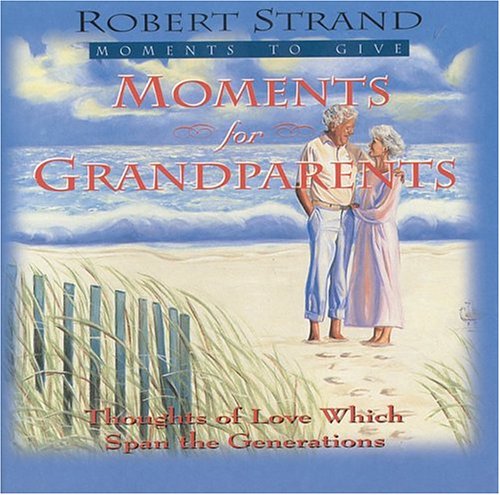
 by Debbie Walker
by Debbie Walker
I have been reading again (or still)! Hope you don’t mind. The first one is titled Thee Onderful Werld ov Wirds. The best I can do for the name of the author is it came from a little book titled Moments for Grandparents, from Robert Strand. I hope it makes you smile. (Figure out the title yet)
I take it you already know of tough and bough and cough and dough. Others may stumble, but not you, on hiccough, thorough, lough and through.
Beware of heard, a dreadful word. That looks like beard and sounds like bird.
And dead … it is said like bed, not bead. For goodness sake, don’t call it deed.
Watch out for meat and great and threat: they rhyme with suite and straight and debt.
A moth is not a moth in mother, nor both in bother, broth in brother.
And here is not a match for there, nor dear and fear and pear and bear.
And then there’s dose and rose and lose… just look them up… and goose and choose, and cork and work, and card and ward, and font and front, and word and sword, and do and go, then thwart and cart. Come, come I’ve hardly made a start.
There’s also click and clique, and grove and glove, and hope and soap, and move and love: there’s sane and seine, and soup and soul, there’s lean and lien, and fowl and bowl.
How about pear and pair and pare? There is also fear and fair and fare.
A dreadful language? Man alive… I’d mastered it when I was five.
THAT IS THE FIRST HALF, the second half has a little different spin on it. I will put that in for the following week.
The second read is a poem I found; I have no idea how many years ago now, but I can tell you the paper I copied it down on is now quite yellowed. Read it and try to still think of me with kindness!
NOT YET
Winter, Don’t descend on me;
I am not ready yet.
The mittens, boots, and woolen socks
Are placed where I forget.
The sleds are piled behind the bikes,
The runners red with rust.
The shovel’s somewhere in the garage
Buried deep in dust.
Winter, don’t descend on me,
Your cold and blowing snow
Keeps whipping through my muddled mind —
Where did the summer go?
I am just curious where your thoughts wander as winter approaches. Let me know at DebbieWalker@townline.org. I’ll be waiting! Have a great week! Thanks again for reading!
REVIEW POTPOURRI: Rachmaninoff’s 2nd Symphony
/0 Comments/in Review Potpourri/by Peter Cates by Peter Cates
by Peter Cates
Rachmaninoff’s 2nd Symphony
After the failure of his 1st Symphony in 1897, Russian composer Sergei Rachmaninoff (1873-1943) had a nervous breakdown that lasted three years, with a loss of confidence in himself as a composer. Relief finally came when he submitted to three months of hypnosis under the supervision of Dr. Nicolai Dahl. His revived creative juices brought the hugely successful 2nd Piano Concerto.
In 1904, he assumed the position of conductor at the Bolshoi Opera House. However 1905 brought increased waves of revolutionary activities in Russia following the massacre by Czarist troops of many protesters at the Winter Palace in St. Petersburg; Rachmaninoff himself cared little about politics and found the unrest distracting to his work .
He resigned from the Bolshoi in 1906 after starting work on his 2nd Symphony and moved himself and his family to Dresden, Germany, for four years, while spending summers at his in-laws’ estate in Ivanovka, Russia (that estate was 3,500 miles east of Dresden and made for a long railway round trip.). Both Dresden and Ivanovka gave the peace he needed to compose several works, such as the Isle of the Dead, his 3rd Piano Concerto and the 1st Piano Sonata. But his need to support his family necessitated a concert tour of the United States in 1909 and a prolonged separation from his wife.
The 2nd Symphony was a huge success at its 1908 world premiere in St. Petersburg and a boon to his self-esteem. It is almost 60 minutes and was often performed with cuts until 50 years ago when the complete score became the norm. As the composer did with the 2nd Piano Concerto, he poured his emotions into the Symphony and created a masterfully developed panorama of delectable melody.
It consists of four movements – the soaring Largo/Allegro moderato, a rip-roaring Scherzo, the sweet Adagio and the triumphant Allegro vivace. My first experience of it occurred during my high school sophomore year when I heard the 1959 Columbia LP of Eugene Ormandy and the Philadelphia Orchestra (It was the Philadelphia Orchestra that gave the U.S. premiere of the symphony under the composer’s direction during his 1909 American tour and, during the ‘20s and ‘30s, Rachmaninoff recorded several works with the Orchestra as pianist with his friends, former Music Directors Leopold Stokowski and Stokowski’s successor, Eugene Ormandy, of the four Piano Concertos and Paganini Rhapsody and himself conducted 78 record sets of his 3rd Symphony and Isle of the Dead.)
A YouTube video of a 1979 performance with Ormandy, then 80, and the Philadelphians is one of the most captivating examples of a great conductor at work. Ormandy left two other recordings of the symphony, one from the early 1930s with the Minneapolis Orchestra and a 1973 one. Other distinguished ones from as early as 1928 through recent years are those of another close friend of the composer Nicolai Sokoloff, Artur Rodzinski, Dimitri Mitropoulos, Alfred Wallenstein, Kurt Sanderling, William Steinberg, Andre Previn, Yuri Temirkanov, Paul Kletzki, Gennady Rozhdestvensky, Leonard Slatkin, Simon Rattle, Alexander Gibson, Walter Weller, Lorin Maazel, James Loughran, Adrian Boult,Vladimir Ashkenazy, Edo De Waart, Tadaaki Otaka, Yevgeni Svetlanov, Andrew Litton, Mariss Jansons, Antonio Pappano, etc., the symphony being music that generates conductors’ best efforts.
Despite his extraordinary gifts as a pianist and conductor, Rachmaninoff was happiest when engaged in composition.
GROWING YOUR BUSINESS: Finding a way
/0 Comments/in Growing Your Business/by Dan Beaulieu by Dan Beaulieu
by Dan Beaulieu
Business consultant
My mother always says there is a way, no matter what the challenge, no matter how steep the hill you have to climb, there is always a way. And that is pretty much what we all face in these dark times of COVID-19. We have to find a way to not only survive, but to keep our businesses growing.
As a business strategist, companies pay me to find ways for them to grow. Companies call me when they are having a hard time, they are stuck in a rut and are not growing, or worse yet, call me when they are on the severe slide towards bankruptcy. It’s not an easy job, but it is a challenging one to say the least. And, I am happy to say that most of the time I do manage to find a way to stop the slide and get them back on track. I’m very fortunate because I win more than I lose.
That kind of strategic thinking for the past 25 years has allowed me to hone my skills when it comes to helping companies and people when they are going through hard times.
So, obviously, as I sit in my home office, communicating with my customers via phone calls, emails and video conferencing, I have had a lot of time to think about what small local businesses here in Maine can do to make sure they survive during these times.
Recently I considered the dilemma of those people who own restaurants, businesses, that are focused on feeding people. What can they do to make sure they stay in business during this pandemic? I know that some have turned to take-out service, people ordering by phone, or on-line and either coming to pick up their orders curbside or getting home delivery. That is a great idea for sure, But, then what can these restaurants do to be truly outstanding at this?
Here are several ideas for being outstanding at your restaurant’s take out service:
- Design your menu to offer the best take out on the market. Upscale your take-out menu and offer your favorites…what your restaurant is known for. Exceed the offerings of traditional take out fare.
- Offer detailed prep instructions. If you are known as a great steak house for example, tell people how to prepare the food once they get it home. How do they warm the meat and potatoes, so they are as good as when you are sitting in their restaurants?
- Offer a complete family-style sit down dinner, for four, or five or six.
- Create special offers. Do some merchandizing that will appeal to customers. A special Sunday night family pizza package at a great price. Or a make Friday night Mexican night! Or like in the old Prince commercials, make Wednesday spaghetti day. And make sure you offer these at a great price.
- Get the word out. We have social media. Start a Facebook page, use Twitter and especially Instagram, or better yet place a weekly menu ad in this fine weekly newspaper. Or go old school and pass out flyers. Just make sure you get the word out to your market so that people will know where you are, what you are offering and what great savings it will be.
Look, these are just five simple ideas, and I am sure some of you are already doing some of these if not all of them. But the point is, if you think about you, you are the expert of your own restaurant and if you get creative and innovative you too can come up with even better ideas to make sure you keep growing your business even in these, the most difficult of times.
SCORES & OUTDOORS: Squirrels: my cultured, refined little thieves
/0 Comments/in Scores & Outdoors/by Roland D. Hallee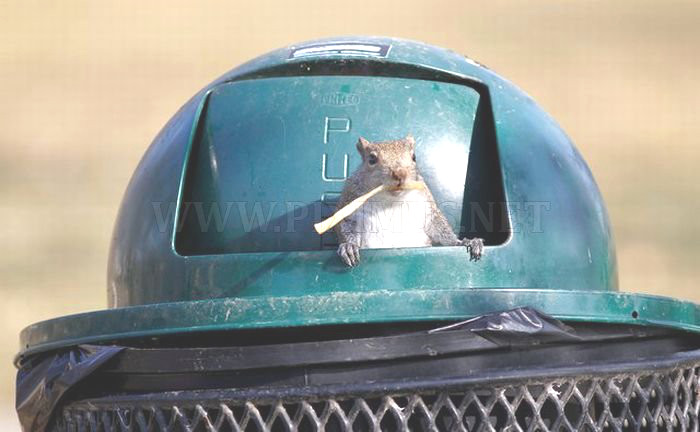
 by Roland D. Hallee
by Roland D. Hallee
I know I’ve written about gray squirrels in the past, but, I have to tell you about the two in particular that have made their home in my backyard. High in a tree, overlooking the garage, sits a large squirrels’ nest where these two reside. You rarely see them together, but when you do, it’s a comedy act rivaled by none.
I refer to them as my cultured squirrels. They have done such amazing things, that I have dubbed them Martha and Stewart because of some of their etiquettes.
For starters, my backyard is peppered with black chestnut pits. I learned a long time ago those nuts are a staple for these scavenging rodents. Annually, my wife and I visit a cemetery in China where there are horse chestnut trees. We gather a bagful and feed them to the squirrels, a little at a time.
Well, the black chestnuts were a mystery until about 10 years ago when I learned there is a black chestnut tree in the middle of Waterville, about 150 yards from my house – by the way the crow flies. These squirrels obviously make that journey to acquire those nuts, stash them in the nest, and discard the pits. I have to rake up the pits because the last thing I need is another tree growing in my backyard.
We watch them frolic around, chasing each other up and around the large pines in the backyard. We even hear them running across the peak of the roof to our house in the early mornings. Once recently, they actually looked like they were dancing on our porch railing. I had never seen that before, but there they were, face-to-face, with front feet wrapped around each other like they were about to dance to a Mozart waltz.
But, what had transpired before that was what really astonishes me. Next to the porch, on a bench, are my trash cans. One metal, one plastic. Now, quite a while ago, the squirrels had chewed a hole through the plastic lid. I repaired the hole and it stayed that way for about a year and a half. The other morning, I noticed the patch was removed. So, I applied another. Meanwhile, with the holidays coming up, my wife and I did some sorting of various foods in the pantry, and discovered a container of some outdated crackers – mini crackers about the size of a nickel. We bagged them with the rest of the weekly trash, and deposited the bag into the trash can outside for Friday’s pickup.
A few days later, I noticed one of the squirrels sitting upright on the railing, chomping away on what looked like one of the crackers. So, I couldn’t help but sit and watch his next move. Sure enough, from my vantage point, I could see where this squirrel didn’t bother to undo the repaired patch, he chewed a new hole through the lid. He jumped off the railing, went down the hole into the trash can, and came out with another cracker. I watched him do that about six times before he noticed me, and left the area.
I went outside, looked inside the trash can, and the bag containing the crackers was split open. So I placed a brick temporaily over the hole. Here’s my question: How did that squirrel know that crackers were present in a plastic bag, tied securely at the top, and deposited into a plastic trash receptacle, with the lid snapped on tightly?
It boggles my mind how keen a sense of smell these little critters have.
I wrote this column last Sunday, and thought I was finished. Well, Martha or Stewart, were back to their old tricks. As I was getting snacks together in the kitchen before the start of the football game, I saw one of them sitting on the railing licking a paper muffin cup. My wife and I had muffins for breakfast on Saturday, and he was cleaning up the leftovers. Then, I noticed in front of him, a K-cup from our Keurig machine, which it had opened at the top, and was literally having coffee grounds with his muffin. I couldn’t tell if it had a pinky in the air while doing this.
It had enlarged the hole where the brick was sitting on top of the trash can, and gone inside to help himself.
Now comes Monday: During the afternoon, there they were again, this time in the axel of a branch on a maple tree, where the two were giving each other a bath, the way a mother cat would do to its kittens. An attempt to photographed them failed. I needed some proof about these two squirrels, because when I tell these stories, people look at me like I was crazy.
The trash is now gone, so I guess the next step is to dispose of the plastic can, and purchase another metal one. I don’t mind feeding the squirrels, but my trash is personal.
Roland’s trivia question of the week:
When was the last time the New England Patriots used three quarterbacks in the same season?
SOLON & BEYOND: Solon Elementary news
/0 Comments/in Solon & Beyond/by Marilyn Rogers-Bull by Marilyn Rogers-Bull & Percy
by Marilyn Rogers-Bull & Percy
grams29@tds.net
Solon, Maine 04979
Will begin this week with more Solon School News! Food Facts: We are pleased to offer free breakfast and lunch to all students again this year under the district’s community eligibility program. Students can buy milk or juice for snack or to go with a cold lunch if they wish to for 30 cents.
Again this year our students will have healthy snacks provided through a Fresh Fruits & Vegetables Grant Program every day. Parents can also send snacks with their child if they wish to. We appreciate healthy snacks!
On each day that students attend school while we are using the hybrid model, they can choose to pick up a take home breakfast and lunch for the next day when they will be learning at home. The menu for take-home meals is included on the menu for in-person meals.
We continue to offer a food hub at our school on Mondays. If you wish to pick up meals for each of the children in your home on those days, please contact Mrs. McFadyen in our school office to let her know how many you will need by noon on the previous Friday. You will receive five breakfasts and five lunches for each of your children. You can pick these up between 11:15 and 11:45 a.m., on Monday mornings at the school (on Tuesdays if Monday is a holiday). If you have children at home or in CCS or CHS, you can pick up all of their lunches here for your convenience.
Please call us at 643-2491 if you have any questions.
Welcome to new staff: We are excited to welcome new staff members to our school this fall.
With the retirement of Terry Corson last spring, we have a new fifth grade teacher, Stacey McCluskey. Mrs. McCluskey has taught for 19 years at Central Elementary School, Carrabec Community , and even a year at Solon Elementary School. We welcome her back!
Our new music teacher is Lindsay Burke-Cinsov. She will teach K-5 music classes and will also teach band and chorus. She has 19 years of experience as a music educator, mostly recently in Farmington. We are pleased to have her on board.
Teaching our preschool class this year is Jennie Mirlocca, who started her teaching career at Solon Elementary but then taught preschool in Kingfield and at Garret Schenck. We are happy to welcome her back to Solon.
Misty Jerkins has joined our staff this fall to be an additional daytime custodian. Her job is to disinfect and sanitize throughout the school from 9 a.m. – 1 p.m., each day. She is working hard to keep our school clean. We welcome her to Solon Elementary School.
Received the following e-mail from Norm Kalloch: “Dear Marilyn, My name is Norm Kalloch and a director of the Arnold Expedition Historical Society. We are offering a car/walking tour of Benedict Arnold’s march across the Great Carrying Place Portage Trail from the Kennebec River to Flagstaff Lake, Sunday, October 11.
“I was hoping you would be willing to mention this tour in one of your columns in The Town Line newspaper.
“ Thanks for your consideration to do this. If you do decide to do so and need more information or clarification feel free to e-mail me. Norm Kalloch; West Carry Pond.”
I have e-mailed for more information about what sounds like a wonderful, interesting idea is something I would like to attend very much. But …… I don’t walk as many miles as I once did, and I will print the facts if I get the e-mail in time for anyone who might also want to attend.
And now for a short memoir from Percy: An uncommitted person is a person without direction in life. He is like a ship without a rudder, and plenty of power but no direction.
I’M JUST CURIOUS: A little bit of history
/0 Comments/in I’m Just Curious/by Website Editor
Tater Tots appeared in 1953
 by Debbie Walker
by Debbie Walker
My friend, Ms. Barbara, gave me her copy of the latest edition of her AARP magazine. In it was an article by Ruth Reichl, The Changing American Table.
The article was interesting and she brought a few questions for the reader. She wrote about Vice President Nixon and Nikita Khrushchev having “kitchen debates” in 1959. VP Nixon said, “What we want is to make life easier for our housewives”. (That’s a strange word. I can’t say I was ever married to a house!)
Changes were happening for our kitchens before 1959. Ms. Reichl wrote an article that kept my interest. One point was in the push to speed up growth of garden produce as well as ‘feed animals, to go bigger and better.’ She wonders if that would be why we have lost some of the flavors and about the nutritional value of these foods.
I have taken for granted the products created over the years before I was born and after. I never realized there is a history to go with each generation of products, including food. Simplifying is to say there was the generation of TV dinners. Even that was taking too much time in the kitchen, so they progressed. Next “instants” became the things to prepare, such as instant potatoes, freeze dried instant coffee, Pop Tarts, Tang and Carnation Instant Breakfast. Then came frozen bread dough, frozen pie crusts, Green Giant peas and Cool Whip.
If you get the AARP magazine, I would have to recommend the article. It’ll give you something to read and ponder if you are staying close to home these days.
The following is a list of products and the years they came on the market.
1934: Campbell’s Cream of Mushroom soup.
1953: Tater Tots: they are crispy recycling of French fry leftovers.
1956: Electric can opener: It had its own cookbook, Can Opener Cookbook.
1958: Jiffy Pop: I remember it being fun to watch it as it ballooned.
1959: Tang: Adopted by NASA
1964: Electric knife: Seems like it was more of a knife for dad.
1964: Pop Tarts: You will love knowing they were developed from research on making a moist dog food patty.
1965: Shake ‘N Bake: “And I helped”.
1965: SpaghettiOs: I had no idea they are that old.
1966: Cool Whip: My mother loved anything resembling whipped cream.
1971: Hamburger Helper: Magic powder could stretch a pound of hamburger.
1971: Crock Pot: A.M. pop in cheap meat to P.M. Enjoy dinner.
1972: Celestial Seasonings: Four hippies began the herbal tea boom.
1976: California Cooler: premixed sangria.
1981: Lean Cuisine: frozen entrees sold out the first year.
1989: Electric Juicer: Now fruits and vegetables could be drunk.
2006: Avocado Toast: gained fame in a New York City café.
2010: Instant Pot: Multicooker.
2011: Meal Kits: Hello Fresh and others take away having to make decisions for dinner.
Anyway, I found the article interesting and I hope you get to read it. My column is a condensed version of an article that gives you plenty to think about.
I’m just curious what you would be interested in reading. Contact me at DebbieWalker@townline.org.
Thanks for reading and have a great week!
REVIEW POTPOURRI – Author: Alfred Kazin
/0 Comments/in Review Potpourri/by Peter Cates by Peter Cates
by Peter Cates
Alfred Kazin
A few years ago, I wrote about the biography of Alfred Kazin (1915-1998), one of the finest writers on literature and any other subject he turned his attention to.
In 1988, Knopf published his huge coffee table volume, A Writer’s America, which is a celebration of his lifelong fascination, come horrible Hell or glorious high water, with the American landscape. Chapter 5, entitled Power Centers, devotes several pages to Washington, D.C.; the following two paragraphs might be of interest to a few readers:
“Alice Roosevelt Longworth (1884-1980), Theodore Roosevelt’s daughter, spanned the Washington scene from T.R. to Ronald Reagan. Late in life, she described Washington as ‘a small, cozy town, global in scope. It suits me.’ Such superior raillery was unknown to New York, Boston, Chicago. In Los Angeles, it would not have been understood at all. Mrs. Longworth understood (as did Henry Adams [grandson of John Quincy Adams and great-grandson of John Adams – two former presidents, brilliant historian and notorious misanthrope and gossip, 1838-1918]) that the romance of Washington was the show it put on. In a way totally unlike the development of other American power centers, Washington LOOKED consistent, all of a piece along its white Roman fronts. It was what the founders had hoped for, perhaps the only thing that the wildly heterogeneous America of the late 20th century could look up to – a CENTER.
“Behind the marble columns and the extraordinary museums that late Washington provided on a scale inconceivable even during the New Deal (the rumor then was that the capital had returned from Wall Street to Washington), the business of Washington was compromise, the deal. Everyone in the halls of Congress was involved with everyone else in Washington – lawyers, columnists, bureaucrats. There was not much fine literature about Washington, but there was certainly a lot of information, much in the form of confidential ‘leaks’ from governmental big shots to newspapermen. Washington was the inside story.”
One immediately notices Kazin’s hoarding of enough topics of interest to fill a library – the Roosevelts, dead American presidents after Teddy up to and including Reagan, D.C. as both small town and global center, the raillery of other urbane urban power centers, the Adams family, Greek and Roman architectural styles in the nation’s capital, etc. A number of other American writers have been hoarders, catalogers, collectors of U.S. related items – the irreverent H. L. Mencken of our buffooneries, F. Scott Fitzgerald of lifestyles of the rich, Ernest Hemingway of fishing, hunting, bullfights, wars and other athletic contests.
William Faulkner mined his little piece of Mississippi dirt for every ounce of golden ore in the novels Sanctuary, Light in August, As I Lay Dying and Sound and the Fury. Stephen King used tricks from classic horror story writers to cast our Pine Tree state of Maine in it, Salem’s Lot and Bag of Bones.
P.S. Alice Roosevelt was Teddy’s oldest child, from his first wife who died at 23 very shortly after Alice was born, and, like her father, had a strong mind of her own. When Teddy and her stepmother wanted to send her away to a private girl’s boarding school in New York City, Alice threatened them with outrageous behavior and humiliation; they let her go to a day school.
When her father, as president, was receiving a visitor in the Oval Office, Alice intruded three times until he threatened to throw her out the window. She backed down. He then informed his guest that he couldn’t run his daughter and the nation, too.
Interesting links
Here are some interesting links for you! Enjoy your stay :)Site Map
- Issue for May 2, 2024
- Issue for April 25, 2024
- Issue for April 18, 2024
- Issue for April 11, 2024
- Issue for April 4, 2024
- Issue for March 28, 2024
- Issue for March 21, 2024
- Issue for March 14, 2024
- Issue for March 7, 2024
- Issue for February 29, 2024
- Issue for February 22, 2024
- Issue for February 15, 2024
- Issue for February 8, 2024
- Issue for February 1, 2024
- Issue for January 25, 2024
- Issue for January 18, 2024
- Issue for January 11, 2024
- Issue for January 4, 2024
- Issue for December 21, 2023
- Issue for December 14, 2023
- Issue for December 7, 2023
- Sections
- Our Town’s Services
- Classifieds
- About Us
- Original Columnists
- Community Commentary
- The Best View
- Eric’s Tech Talk
- The Frugal Mainer
- Garden Works
- Give Us Your Best Shot!
- Growing Your Business
- INside the OUTside
- I’m Just Curious
- Maine Memories
- Mary Grow’s community reporting
- Messing About in the Maine Woods
- The Money Minute
- Pages in Time
- Review Potpourri
- Scores & Outdoors
- Small Space Gardening
- Student Writers’ Program
- Solon & Beyond
- Tim’s Tunes
- Veterans Corner
- Donate





